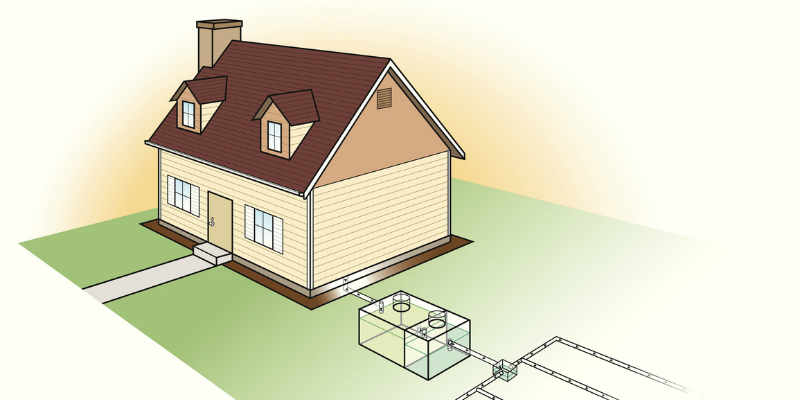
If you are new to the area and are coming from an area of city-maintained sewage systems, a septic system is likely a bit different and potentially even scary to you if you don’t know how it works. Septic systems have been in use since the late 1800s and are still used by about 25% of households in the U.S. today. Still, perhaps the other 75% is unfamiliar with just how these systems work to carry away and sanitize the waste from our homes. If you are in either category (those who do or don’t currently use a septic system) it can be empowering to understand just how a septic tank system works.
Septic systems work with plumbing to carry away and sanitize wastewater and solids from sinks, tubs, toilets, washing machines, dishwashers, and showers in our homes. Each septic system has two main components: the tank and the drain field. The tank is what holds most of the solid waste that comes through the system. Heavier waste sinks to the bottom where it is broken down over time by good bacteria. This is called the sludge layer, and this layer is what is removed during regularly scheduled tank pumping (every 3-5 years, depending on the system). Lighter wastes, such as oils, grease, and fats, float to the top of the water in the system and are called the scum layer. The way the septic tank is designed is to prevent either the sludge or scum layers from flowing out of the tank.
The middle layer of waste water is called effluent, and this is the layer that is drained out over time into the porous service of your drain field. Here, the waste water filters through the soil’s natural layers, which then naturally treats and filters the water and waste, separating the harmful bacteria or viruses while diffusing the cleansed water into the surrounding soil. This treated water then eventually makes its way into the ground water after it has been treated both in the tank and through the natural filtering process.






